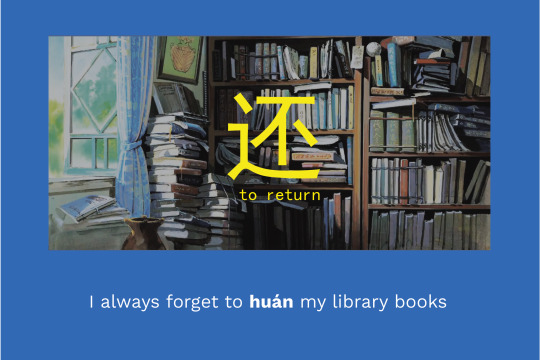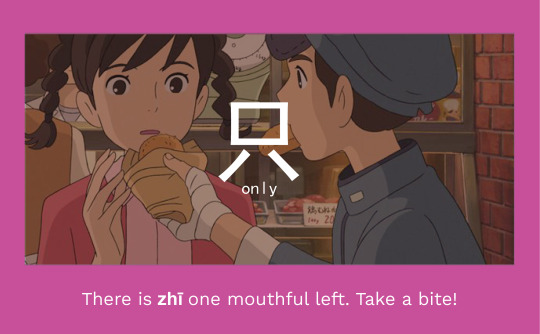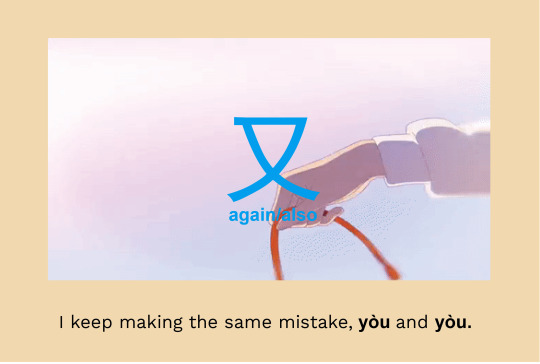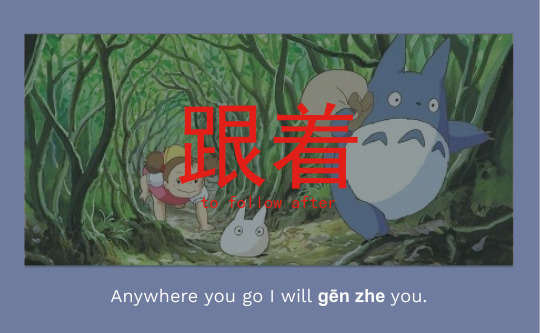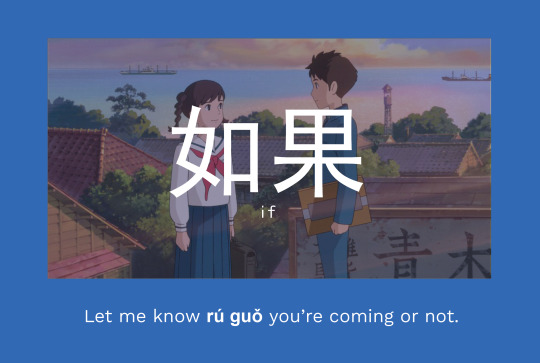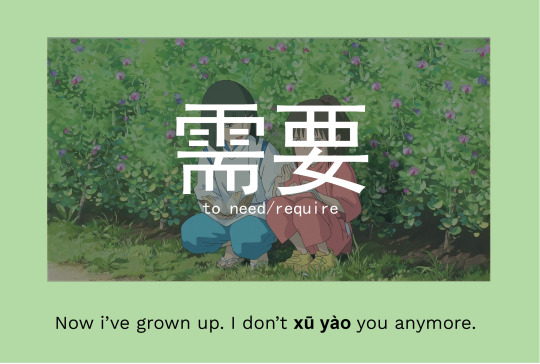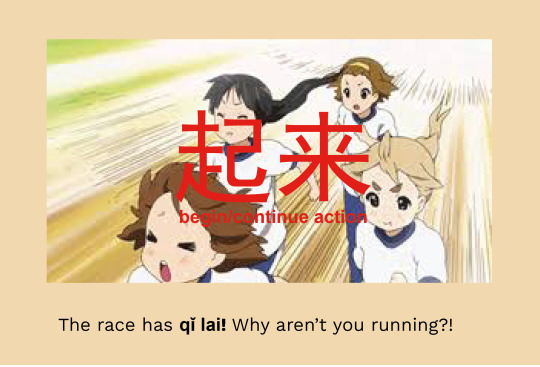#chinese study
Let’s rewind back to my Chinese school and high school Chinese class days. Sometimes the teachers would play Chinese music (yay). Today, we’re revisiting 10 songs that have stuck with me over the years. If you haven’t heard them before, go check them out for the true Chinese class soundtrack experience.
Warning: videos may take a sec to load!
(1)任贤齐 - 对面的女孩看过来
♫:寂寞男孩的悲哀 说出来 谁明白
(2)周华健 - 朋友
♫:终有梦 终有你 在心中
(3)邓丽君 - 甜蜜蜜
♫:你的笑容这样熟悉 我一时想不起
(4)王启文 - 老鼠爱大米
♫:不管有多少风雨 我都会依然陪着你
(5)S.H.E. - Super Star
♫:如果我忘了我 请帮忙记得我
(6)筷子兄弟 - 小苹果
♫:生命虽短爱你永远 不离不弃
(7)光良 - 童话
♫:你哭着对我说 童话里都是骗人的
(8)周杰伦 - 听妈妈的话
♫:想快快长大 才能保护她
(9)曲婉婷 - 我的歌声里
♫:你就这样出现 在我的世界里
(10)陈芳语 - 爱你
♫:美好爱情 我就爱这样贴近 因为你
Honorable mention:
(11)前进乐团 - 对不起我的中文不好
♫:对不起 对不起 我只想跟你当朋友
I couldn’t not include this song! While not really a classic song, it is a Chinese class classic.
Thought i’d try a slightly different approach, particularly for the nouns to remember them. By breaking down individual meanings of the radicals within each character + pairing with a context driving trigger sentence. With Chinese, the radicals tell a story of how the word came to be, so perhaps looking at Chinese characters through that approach will encourage another level of long-term memory.
**Radical meanings are in bold + the vocabulary is CAPITALISED


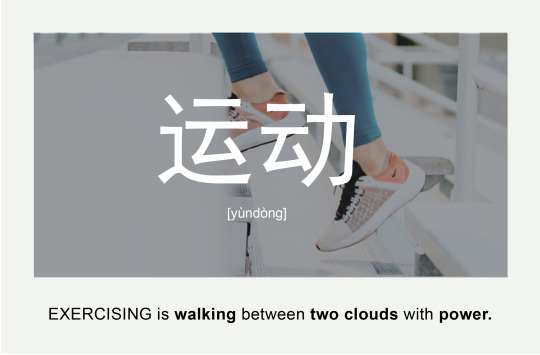



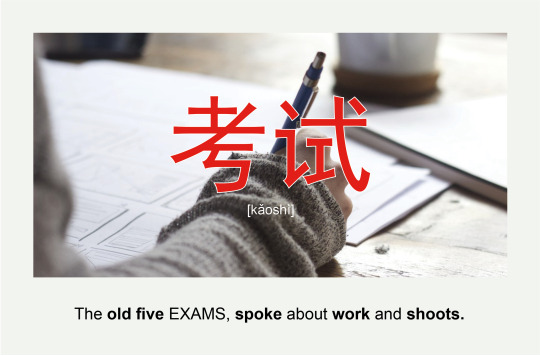




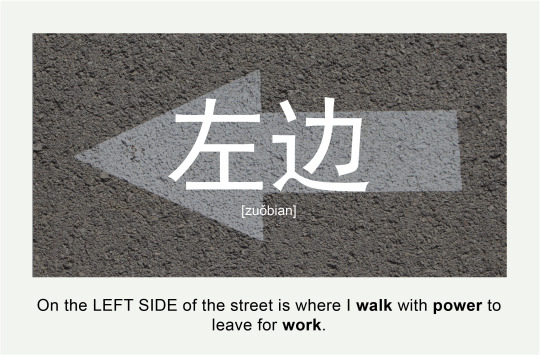







Late night stories
A/N: This is for those interested in writing in Chinese correctly! This lesson series is taken directly from my Living Language Chinese Character guide, but substantially paraphrased to be shortened and more simple.
What to know before diving into learning the brushstrokes that make up a Chinese character:
- Each brushstroke has a name, however the name does not influence the pronunciation of the character itself.
- The two types of strokes in Chinese Characters are called basic and turning (also referred to as “combined”)strokes. Turning strokes requires the writing utensil used to be turned more than once before it is lifted off the paper.
- If the strokes are not draw correctly then the character will not be legible, just like handwriting for languages like English, French, Spanish, etc.
Lesson 1 - Basic Strokes
一 :: héng 横 (left to right)
丨 :: shù 竖 (top to bottom)
丿 :: piě 撇 (top to bottom left)
丶 :: diǎn 点 (top left to bottom right or top right to bottom left)
乛 :: zhé 折 (left to right with downward hook)
Lesson 1 Quizlet Set||Mandarin Chinese Classroom (for French and English speakers)
EXAMPLES IN ACTION
example of héng in a character : 三 (sa1n (three))
example of shù (and héng) in a character: 十 (shi2 (ten))
example of piě (plus shù and héng) in a character: 千 (qia1n (thousand))
example of diǎn (plus piě, shù and héng) in a character: 玉 (yu4 (jade))
example of zhé ( plus diǎn, piě, shù and héng) in a character: 买 (ma3i (buy))
in case you forgot what the numbers after the vowels mean in the pinyin examples
A/N: I will come back to edit this as more lessons are posted so there are links to future ones. Even so, these posts will be tagged as #character strokes.
{Here is a guide to difficult pinyin pronunciation I found in a book on the Chinese government that I will work cite at the end of the post}
As many know, Chinese characters are one syllable long, made up of an ‘initial’ letter and ‘final’ letter that dictates that overall sound of the syllable. With that in mind, here are two tables cover the harder pronunciations in pinyin for ‘initial’ and ‘final’ letters.
Initials:
Pinyin English (pronunciation)
c ts
qi cheek
x hs
z dz
zh jack
Finals:
Pinyin English (pronunciation)
a father
ai bye
ao now
e but
i see (note: after initials ‘ch’, ‘sh’ & ‘zh’,it’s pronounced as ‘r’)
iu yo
ou so
u loot
ua trois (french for “three”)
(note: italicized is equivalent in sound that pinyin makes)
Combination Examples
Pinyin English (pronunciation)
zhou jyo
xi hsee
zao dzow
Work Cited
Lieberthal, Kenneth. “Pinyin Pronunciation Table.” Governing China: from Revolution through Reform, W.W. Norton, 2004.
A/N: If you have any questions, feel free to drop them on me!
edit: as it’s been brought up, the table’s representation of how to pronounce ‘qi’ is slightly off. A slight ‘t’ in front makes it more authentic and correct. I believe the book compared it to “chee” in cheek because that is the closest representation in English. Nevertheless, ‘tchee’ is more accurate.
bdrkness replied to your post “Explaining the four tones used in Mandarin Chinese”
谢谢你! So I’m just curious… if 妈 is mother what are the 汉子 for female horse and how do you pronounce it in pinyin?? Would it be 女马?
你好 ! firstly, i believe you meant 文字 (wén zì). With that in mind, the term for a female horse in english is “mare”. The 文字 for mare is 母马 and the pinyin is mǔ mǎ. It would be pronounced like MuH-MaH.
If you’re looking for a literal translation of “female” “horse”, 女马 would be correct ( 女 meaning “female” and 马 meaning “horse”).
A Visual Guide to Making Milk Tea
*yes, the pinkish one isn’t milk tea but it’s still deelicious so… ¯\_(ツ)_/¯
Anyways, I’ve been drinking tea and milk tea more often these days so I made a graphic showing y’all how to make my favorite drinks! I added the Chinese just cause. Maybe you could use it to study ingredient names? haha idk
Enjoy a cup of tea on my behalf and lemme know what you think about the drinks or about this graphic! <333
- EFm
Post link






Always wanted to know the names of all countries in Chinese? Yes, me too!
Here you go! Part 1. Africa
Keep an eye out for Part 2. North America and South America
The Super Chinese team
Overview:

This is a 自媒体 talk show abouteconomy and politics. I really enjoy the format of the videos and Wong Kim speaks very clearly and methodically that his videos keep you interested.
Access the resource:
https://www.youtube.com/channel/UC8UCbiPrm2zN9nZHKdTevZA
Whats good about it?
- Updated twice daily, videos are 1 hour long, the news analysis section is about 30 minutes
- Some videos include subtitlesthat you can select in either English or Chinese
- The format of each video is the same, discussion of a topic and then an analysis of the news and then discussion with viewers at the end. Once you listen to a few videos you’ll become familiar with the format
- Keep up to date with current events as well as improving Chinese.
On a side note:
Whenever you watch news, of course every media outlet has their own stance/position so I encourage everyone to listen widely to differing opinions to really understand Chinese culture/politics (a journey I am currently on too!). Remember the majority of opinions ‘inside the wall’ will be different to those ‘outside’. I will try to share both types of resources. I also will try to share western media that has Chinese news outlets as well as in my recent journey of studying Chinese economy and politics I think listening to all differing voices is very important to form your own understanding!
Overview: This is a talk show that is no longer produced but talked about current topics, even touching on some politics in a casual, relaxed talk show in a free talk format
What good about it?
- interesting topics, related to current affairs
- free talk format
- often in short 2-30 minute segments
Resource link: Go the YouTube channel here:https://www.youtube.com/channel/UCbi-ZrTUyuReTqPpqVGJ8pg
working on a spring 2020 updated intermediate listening master post (primarily mid-upper-intermediate). please recommend me any listening resources you use as an intermediate I can check out to help create the list :D
Thank you all !!
STUDY “ODE TO JOY” WITH JEN WHO BREAKS DOWN EACH SENTENCE LINE BY LINE IN A QUICK AND EFFICIENT WAY TO HELP YOU LEARN CHINESE SPOKEN IN TV SHOWS, [NO INTERSPERSED BITS OF ENGLISH SPOKEN BY THE TEACHER OR TOO MUCH EXPLANATION OR ‘FLUFF’]
What’s good about this resource?
1. Very little English is spoken, as we all know intermediates looking step up to upper-intermediate want as little English as possible when learning.
2. Sentences are repeated several times both in the show and by Jen to help you hear clearly and remember
3. You can almost watch it like a TV show as it cuts each sentence and repeats several times but goes straight back to the TV show and plays the next sentence. There is little ‘fluff’ for example when the teacher says “XXX means YYY” and “if you want to say ZZZ you can say AAAA”. We don’t want this English interspersed in our learning!
4. there is a round up of important points and the end where the teacher speaks a little English and gives extra examples to help clarify new words. this is useful for bridging the intermediate gap or you could skip it because its the same content as the first part.
The full playlist is below:
1. Find a language partner on Hellotalk/Tandem

Talk over the phone with your language partner, it may be daunting at first but stick with it and you will really see the benefits in terms of your every day speaking. It’s free and you can make a new friend. If you are uncomfortable, try sending audio messages through the app and build the confidence to speak on the phone. It may be best to find a partner who is willing to do half the time entirely in chinese, half entirely in English, or you speak entirely in chinese, them entirely in English. If you have a partner who doesn’t seem genuinely willing to help you speak Chinese and only wants to practice English, move on!
2. Pay for 1-1 lessons on iTalki etc.

Over Hellotalk it may be difficult to make your teacher explain everything clearly and keep repeating certain things you missed because you may feel it’s just for chatting. With a teacher they also have better experience teaching so you’ll waste less time, they know what you are trying to say already (because teachers do have the magical power, they’ve seen hundreds of students before too)
I myself last semester hired a Chinese teacher and during our lessons I came prepared with all my questions and things I wanted to practice and the lesson must have been really boring for her, but I paid for lessons so I wanted to get the most benefit for myself, ha!
Additionally, if you have Wechat/Alipay you can find a teacher over Hellotalk and cut out the agent fee on apps like iTalki!
3. Listen more! (and repeat the audio material out loud)

Listening to podcasts, especially situational ones, such as ChinesePod and CSLpod are the best for improving everyday speaking, you can get used to the rhythm and words used in everyday speech. You can also listen to bilibili or Youtube content creators who are speaking naturally to a camera. Listen more and you naturally can improve your speaking also. Haven’t you ever met those English non-natives who have good accents and speak well, ask them why and they often say they watch a lot of American TV?
4. Record yourself on your phone talking about a topic

Sometimes there are times when I want to learn about a topic but don’t have a partner to discuss. It also gives you time to ‘slow down’ and really think about the words you want to say and how to get your point across because you are less nervous. For example, I am interested in politics and nutrition, but when talking with somebody the conversation may go into a different direction and I can’t practice the words I wanted, I therefore occasionally record myself talking on a topic. It is also good to keep as a record of progress and to re-listen for your own mistakes, particularly in tones and grammar!
Do you have any other tips? Share them in the comments!
Hi all. Lately with the virus here in China I have been stuck inside studying. I am also been watching a few new shows in my spare time lately. Here are some of my favourite for intermediate-lower advanced listeners.
Firstly, where can you watch shows?
There are an abundance of places to watch shows, especially within China but you can often find shows on Youtube or on various C/K/J-drama sites outside (though if you can it’s best to watch with only Chinese subtitles).
Tip: If you can’t understand everything, watch once with English subs, and re-watch again with Chinese subs only!
Anyway, on to my list, I have split these between TV series and reality shows:
TV Series
1. 都挺好

This is a story about family life and the burden children may feel of their parents, it reflects modern day Chinese social issues. I really enjoyed this drama
2. 亲爱的,热爱的
I have just started watching this one. It is a love story and the main character became really popular in China last year!

3. 欢乐颂
This is sometimes called the Sex and the City of China, its about working women in the city of Shanghai!

Variety/reality
1. 爱情保卫战
This is one of my favourites! It’s a talk show where two people go on to solve their romantic issues and four ‘experts’ give them advice. Its spoken in very natural Chinese and is very interesting to see people arguing about “He was looking at another girl” or “he has changed since we first met” haha!

2. 非诚勿扰
This is the ‘Take me out’ of China, kinda… It’s essentially the same format without the crude jokes, tho. Sometimes they have foreigners on the show looking for love too.

3. 外国人在中国
This show is good for intermediates as there are foreigners speaking, the level is easier to understand in general and discusses basic things such as daily life. It also can give you a glimpse into people’s lives who are here studying too!
What are you favourite shows? Share them with us below!
Below I outline steps when I study a new lesson in a course book. Many (at least for chinese) are in the format of - 1. new words, 2. text, 3. grammar notes + exercises, 4. comprehension exercises, 5. speaking/writing task
I thus roughly follow that structure when I study the book.
1. preview new words + add to pleco (or other dictionary that has flashcard system built in)
2. write notes on the book next to vocab if necessary
3. read the text a first time only underlining words I don’t know but don’t look them up
4. go back in and look up the words + add to pleco
5. attempt the comprehension exercises (sometimes I will do this before looking up the unknown vocab for good practice but depends on the difficulty of the text)

6. look up answers and review what was wrong
7. read grammar notes + do the accompanying exercises. sometimes I add a ‘grammar structure’ or phrase or useful example sentence into pleco using the add a custom vocabulary function (e.g. below)

9. read back through the text a last time before moving on
10. outside of the specific blocks of time sitting down with the textbook, when I have a spare few minutes, waiting for the bus etc. I will play on pleco doing drills of the vocabulary added to it that week - see my previous posts on how I study, or check out ‘hackingchinese’ who has an amazing post of finding time with a ‘rock and sand and water’ model.
11. there will of course be times you don’t understand things in the textbook. I suggest you note these down, on onenote as you go along and use your teacher/exchange partner to help explain things you don’t understand.
12. another tip is to listen to the text audios if available - when you are doing other activities such as walking, cooking to squeeze precious study time in.
Do you have any tips you could share on how to learn effectively?


